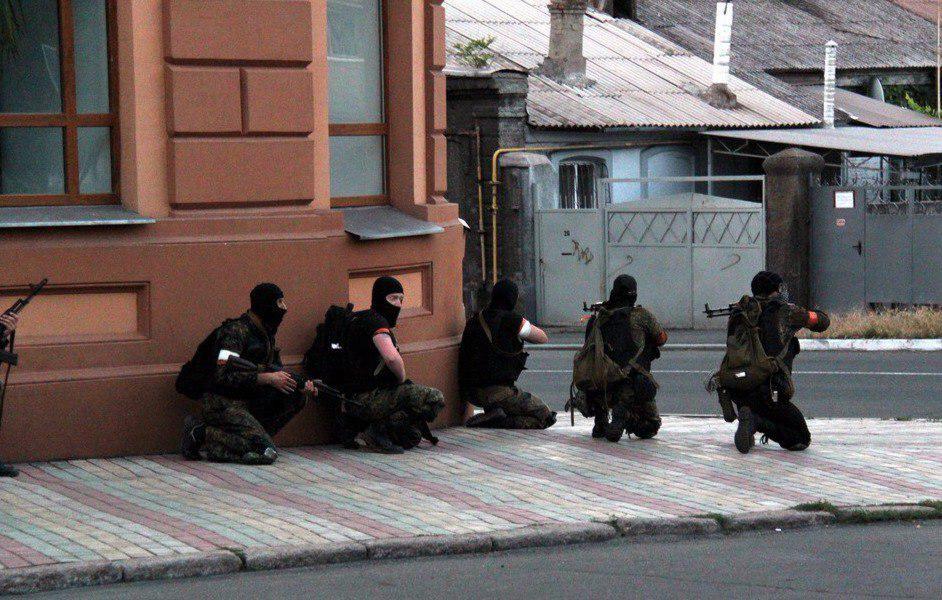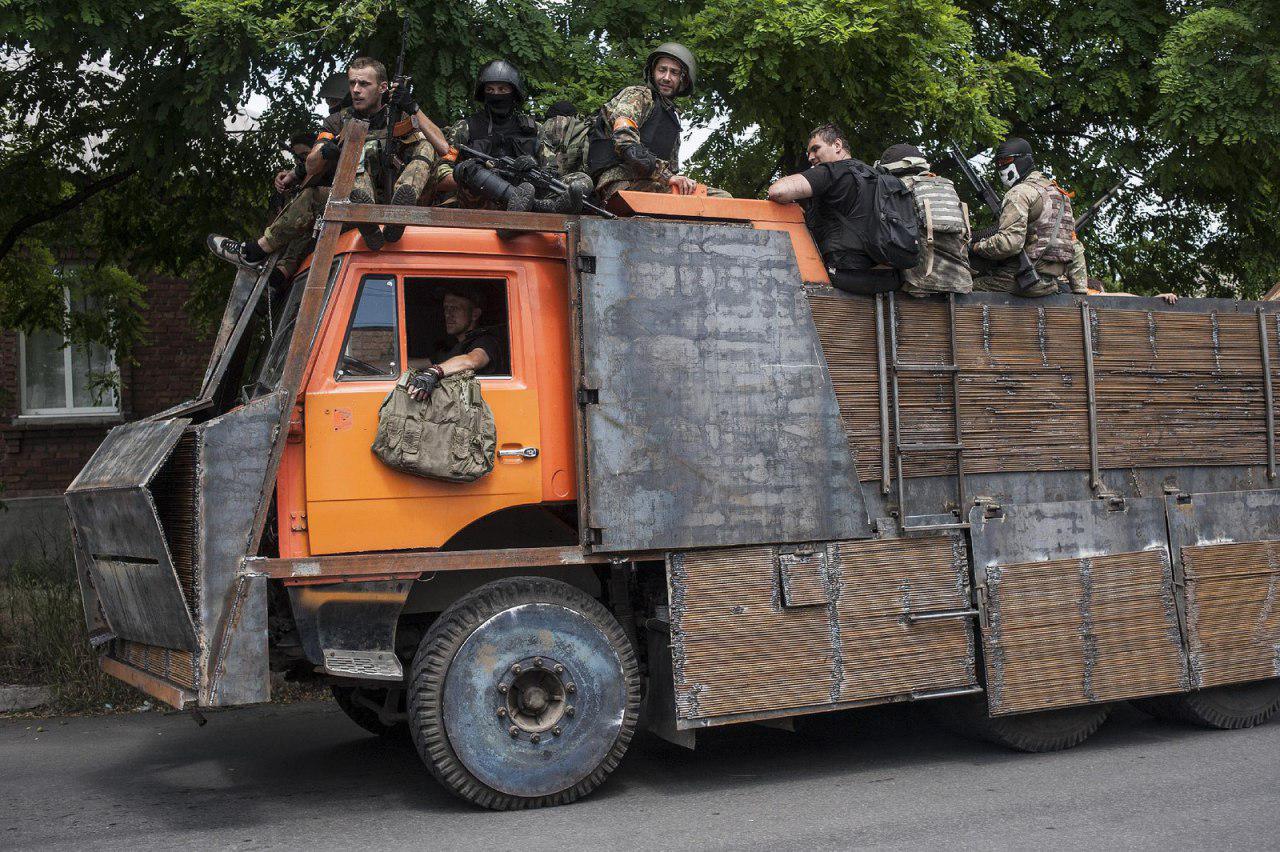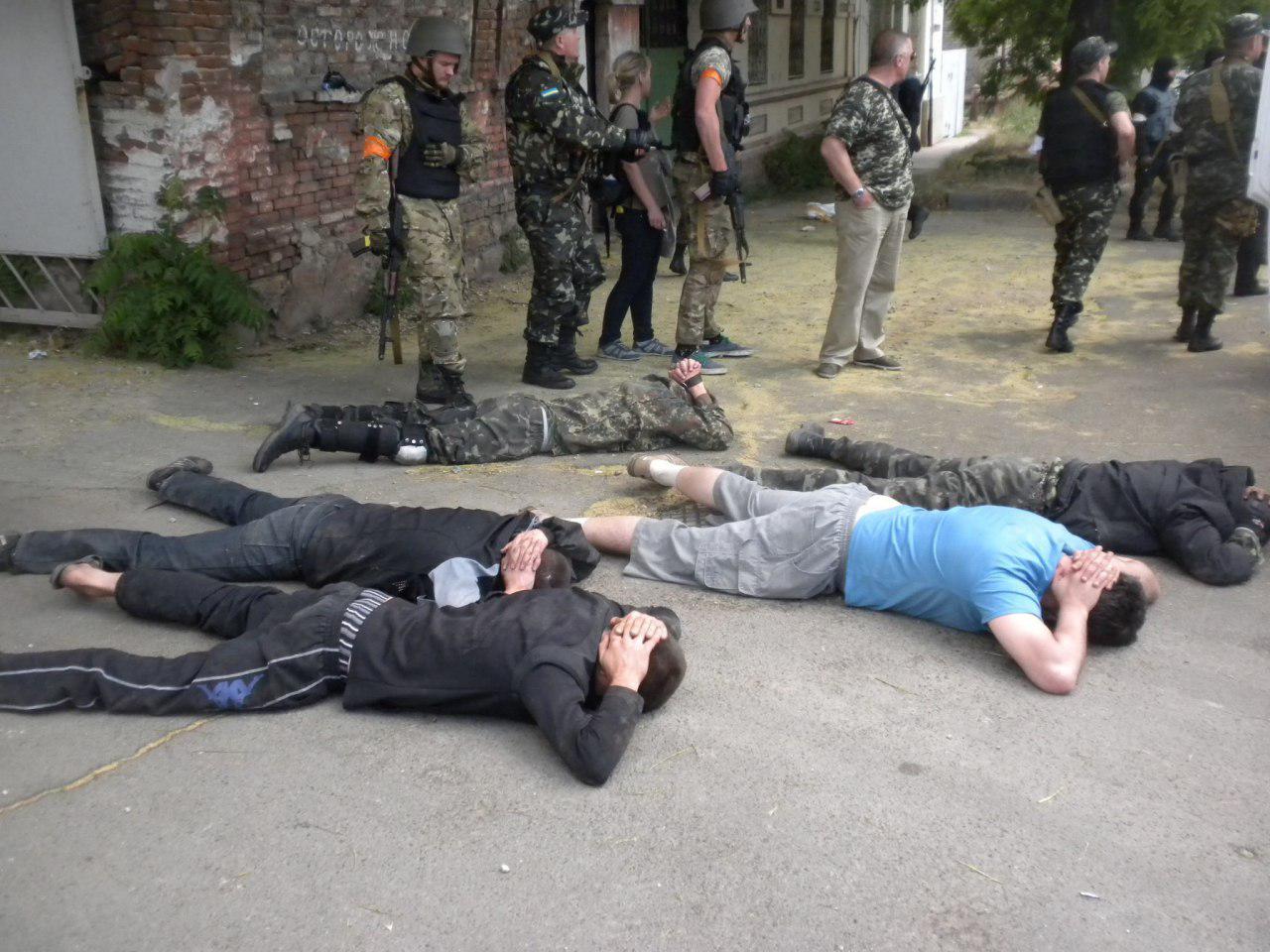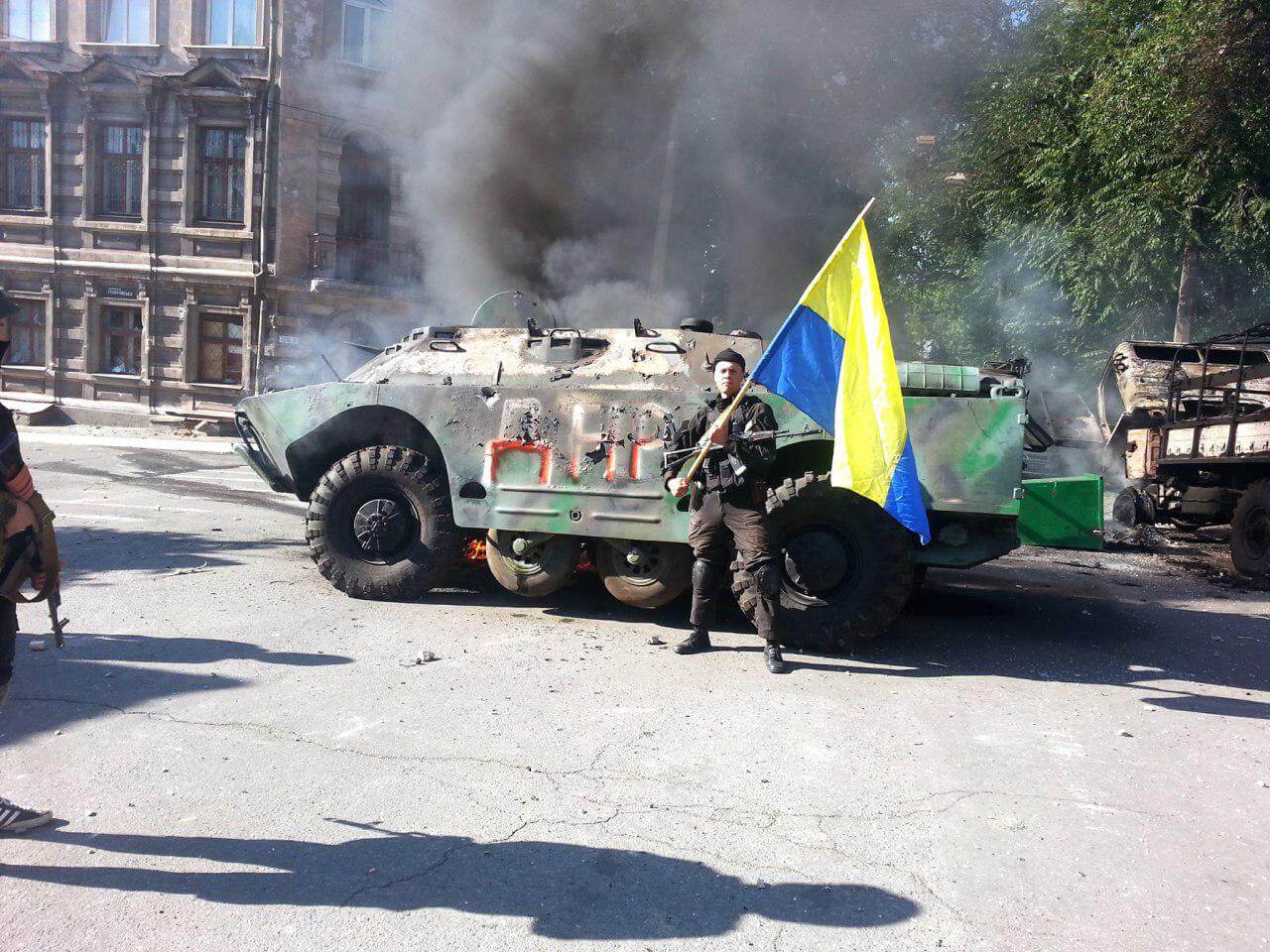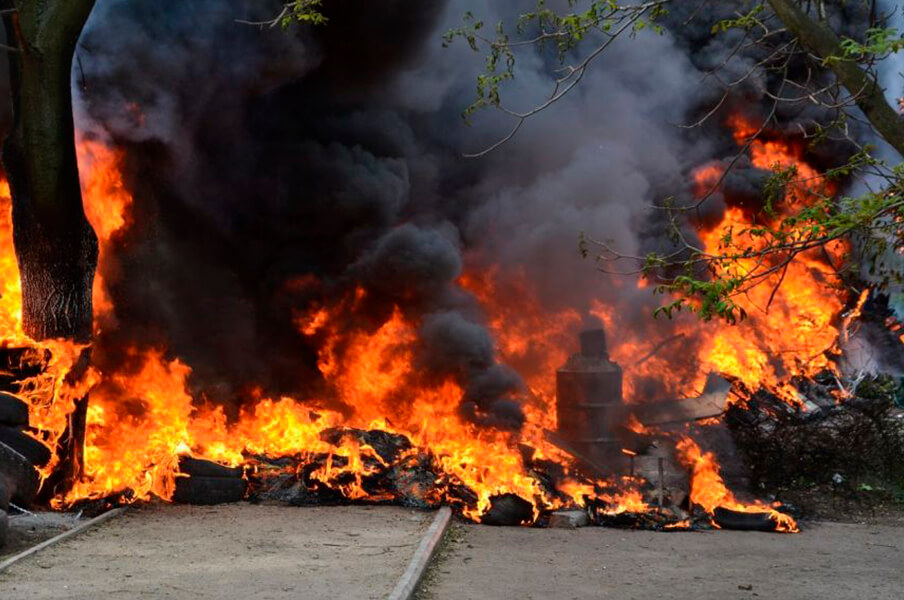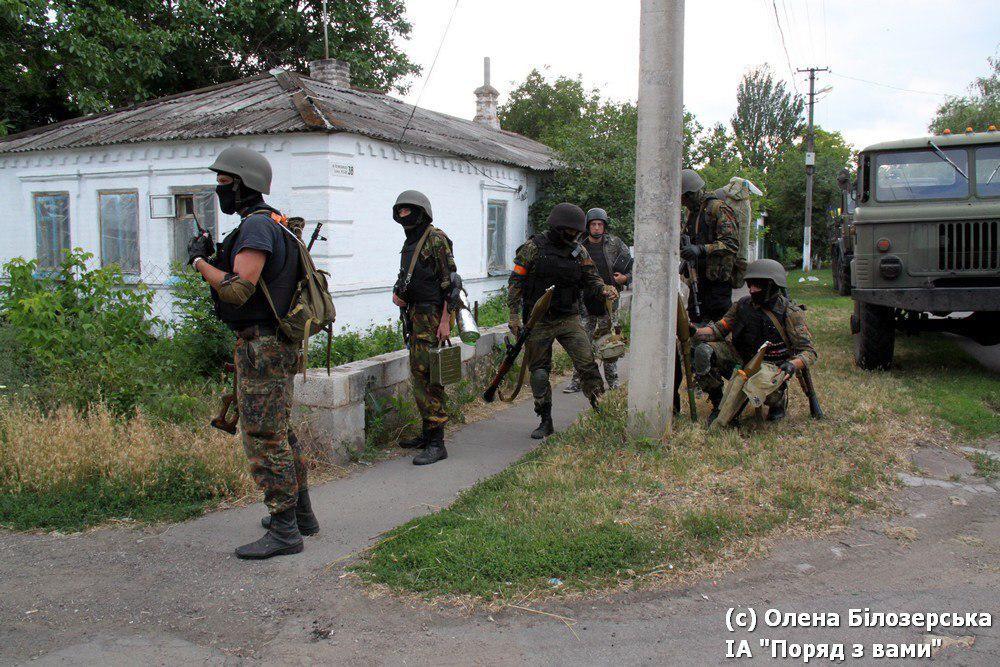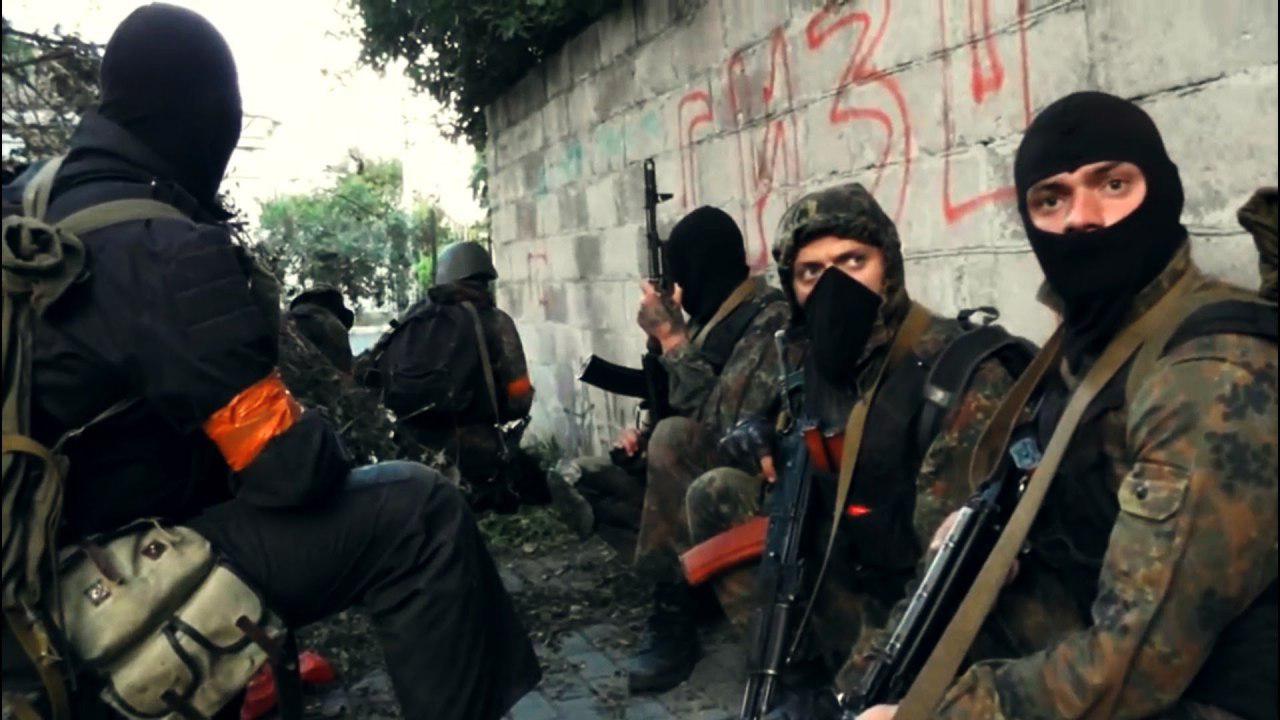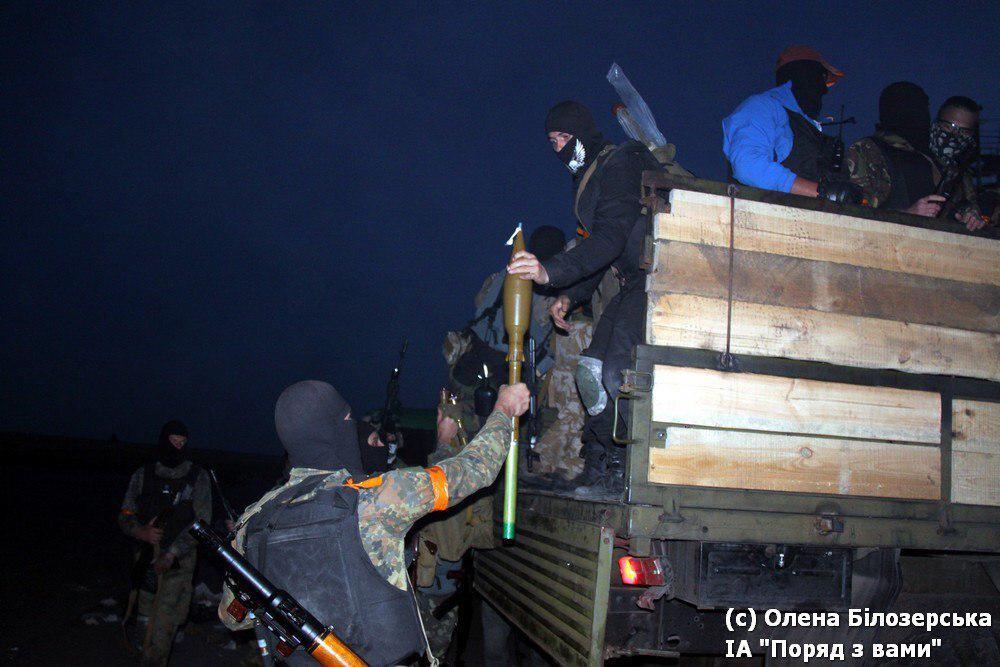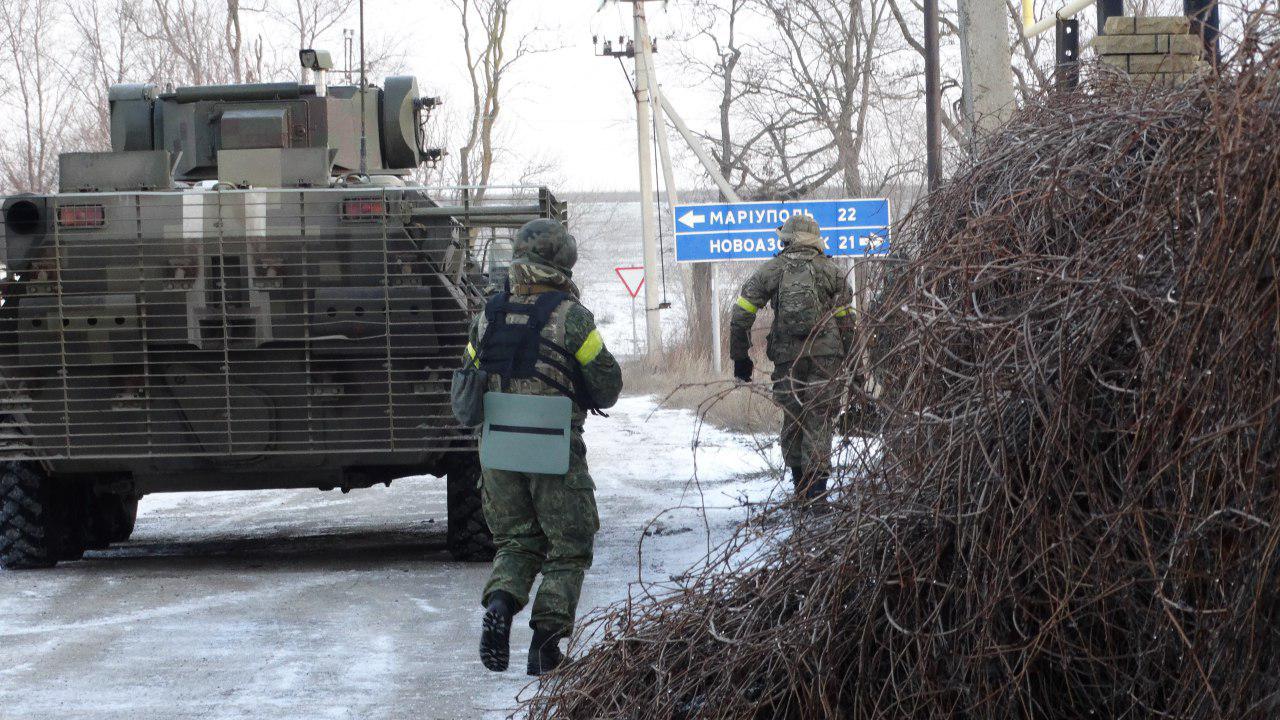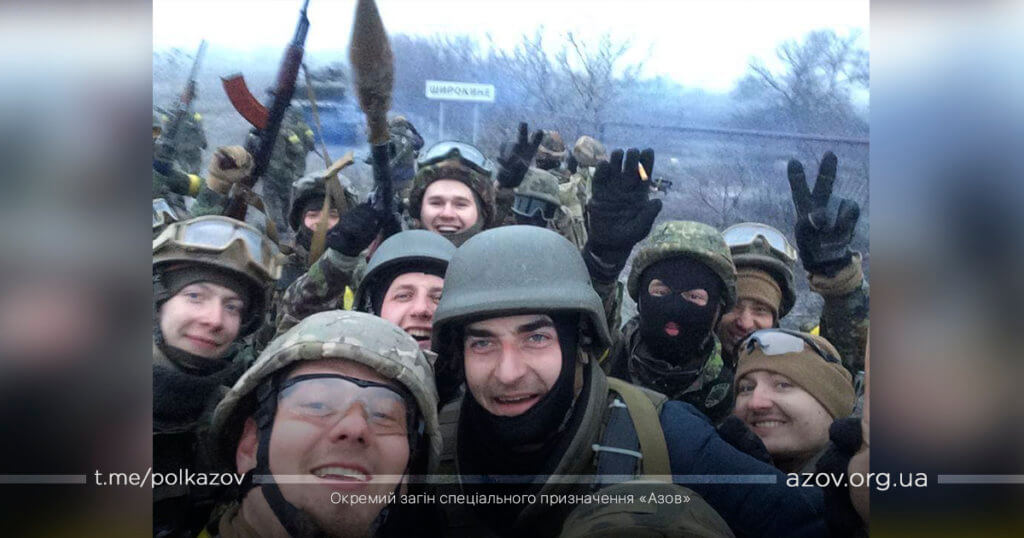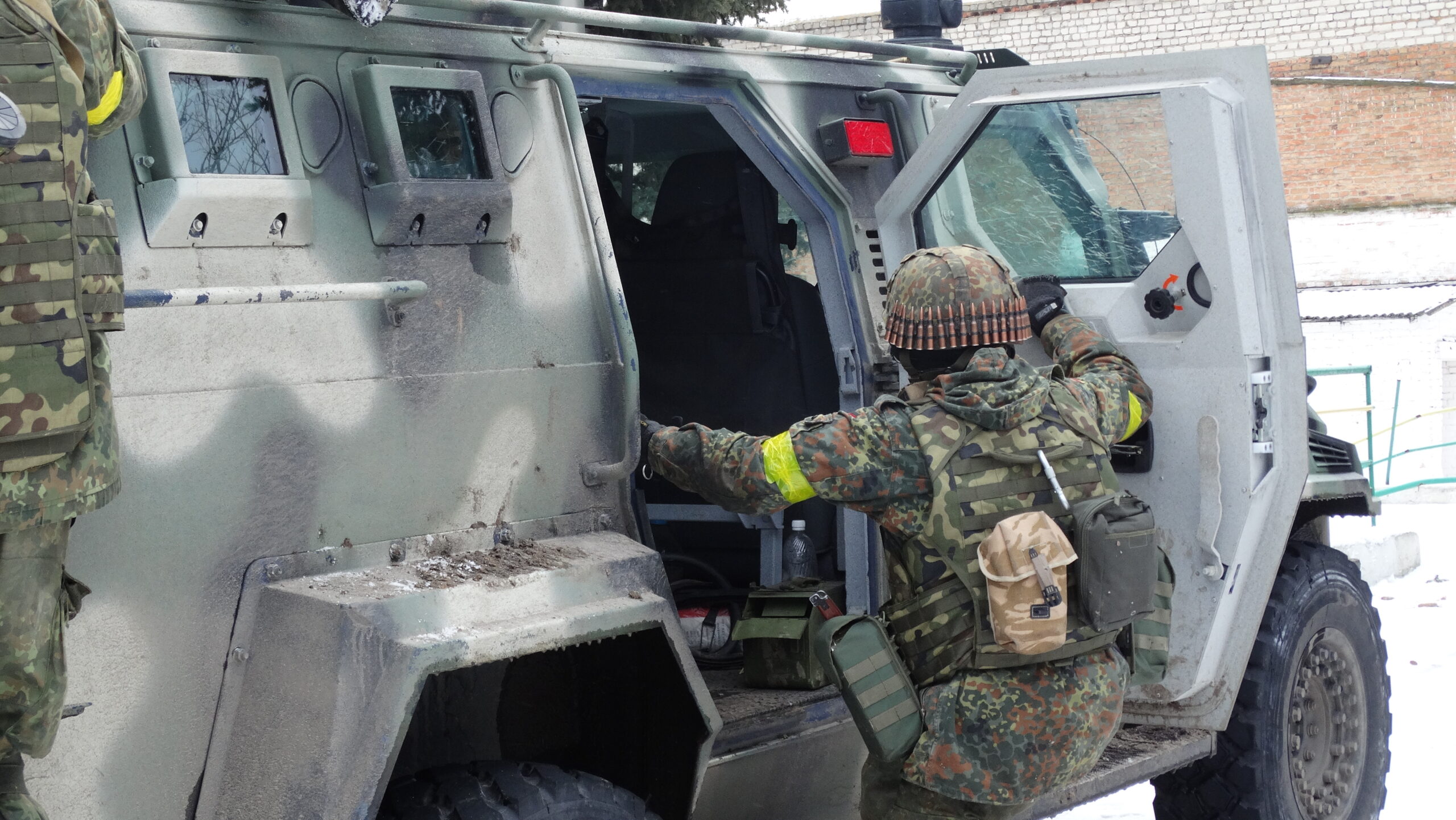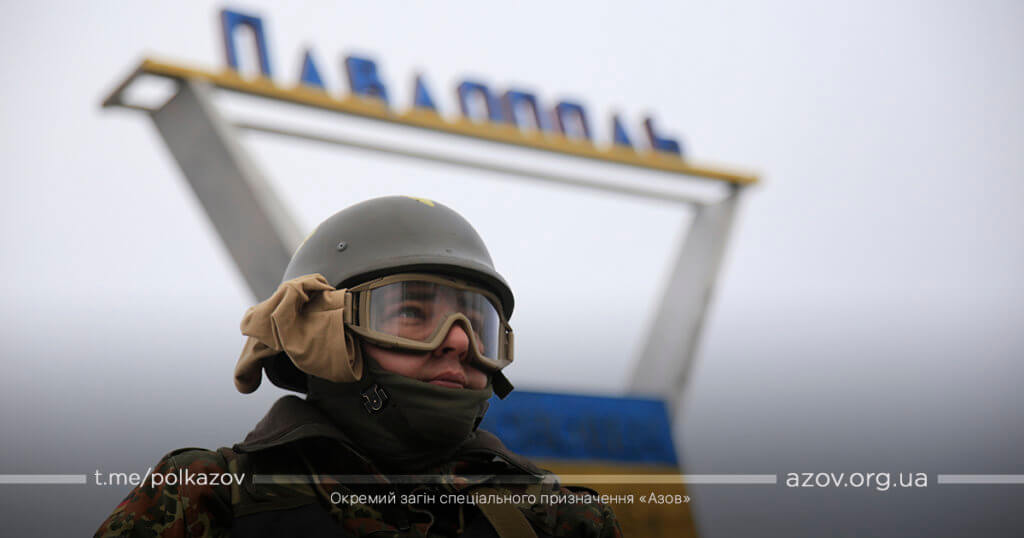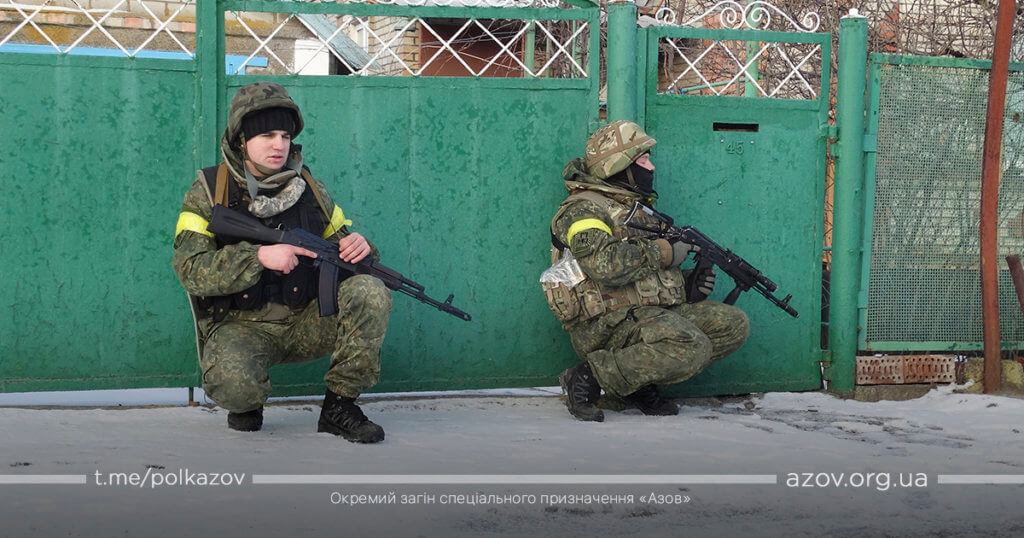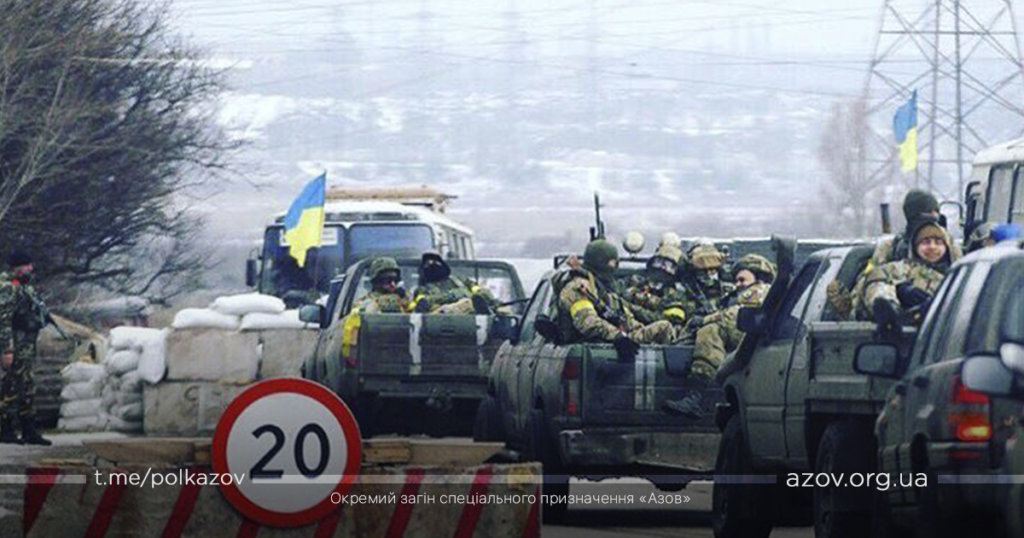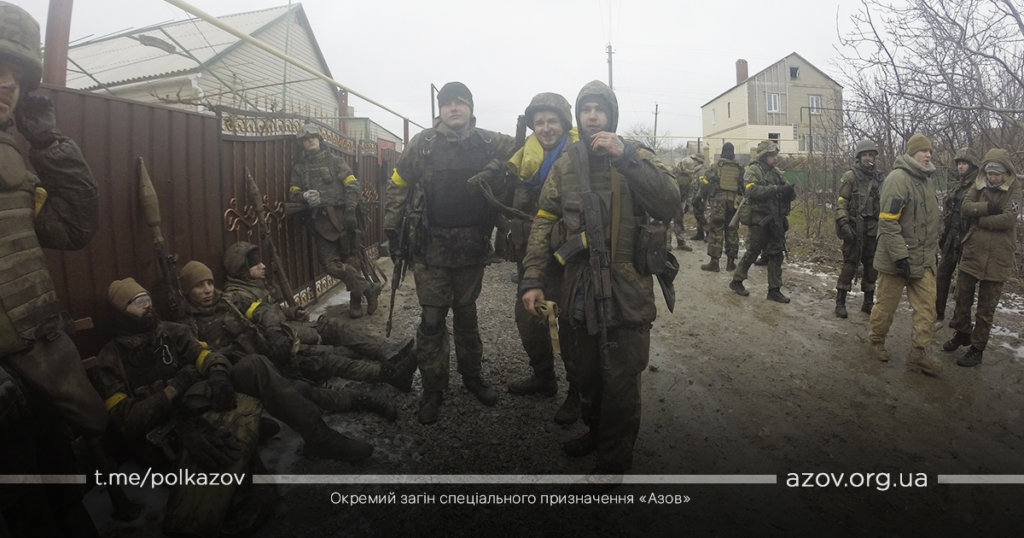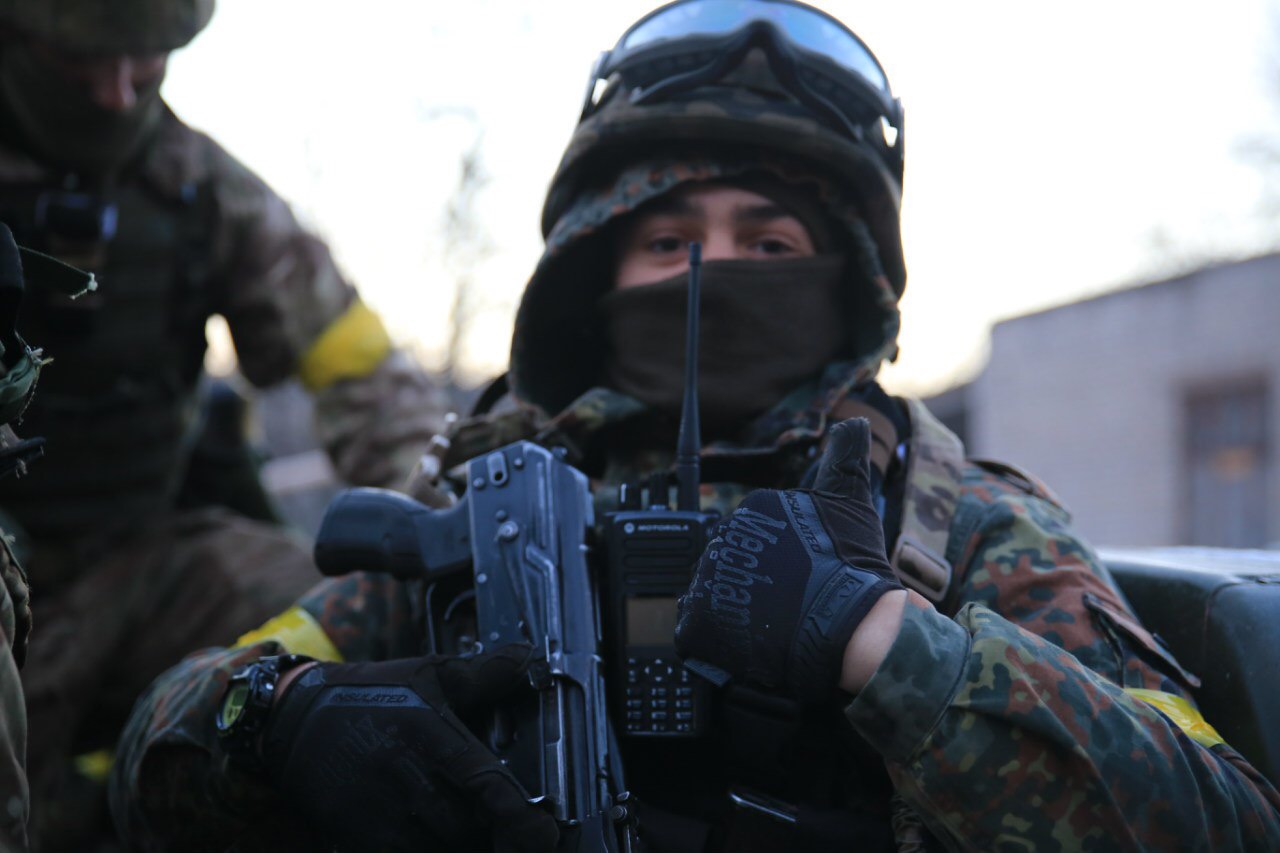From a volunteer force to a professional unit
Eastern Europe is a land of centuries-old wars, where the soil is often blackened by dried bloodstains, a land where the most armed people in Europe have lived for centuries. A land that has witnessed the rolling wheels of history: numerous invasions by nomads, epidemics, two world wars, genocides, famines, ethnic cleansing, revolutions, the persecution of intellectuals and, finally, the world’s greatest radiation disaster – Chernobyl. Despite all these losses and the sheer scale of the tragedy, new heroic generations continue to emerge.
In the spring of 2022, “Azov” echoed around the world with the brave defense of Mariupol.
The beginning, however, was no less courageous.
In the spring of 2014, Azov became the first volunteer unit that joined the Ukrainian law enforcement structures.
It all began with the volunteer self-defense that emerged during the events on the Maidan, a prototype of the territorial defense that was later introduced. The effectiveness of territorial defense as an element of the armed forces was demonstrated during the full-scale invasion, when citizens came forward and formed volunteer units to support law and order in certain territorial communities, protect important objects and carry out counter-sabotage measures. Some of the territorial defense forces later took on combat roles as light infantry within the Ukrainian armed forces. In the occupied territories, territorial defense became the backbone of the resistance movement. It all began with a group of volunteers, striving to defend their country.
Spring 2014
One of the first vivid examples of such a militia emerged in the spring of 2014 – the paramilitary group “Black Men”, which existed for about two months. “Black Men” got their name from journalists… and from the cheap black ripstop protective uniform worn by the fighters. For most of them it was the first uniform in their lives. Dozens of activists have taken part in power struggles with pro-Russian militants in eastern Ukraine. It is still illegal to carry weapons in Ukraine, so this was an almost unarmed militia, with only a few pump-action rifles and rifled semi-automatic weapons owned by a few hunters from among the “black men”.
The battle on Rymarska Street in Kharkiv

The most famous episode in the history of the formation of the “Black Men”, later became a part of as the MIA (Ministry of Internal Affairs) “Azov” Battalion. On the night of March the 15th 2014, the first armed conflict since Russia’s undeclared war took place.
Background: On March 1st 2014, the Federation Council of the Russian Federation supported the appeal of Russian President Vladimir Putin and agreed to deploy Russian armed forces on the territory of Crimea.
“In connection with the extraordinary situation that has developed in Ukraine, the threat to the lives of citizens of the Russian Federation, our compatriots, the personnel of the military contingent of the Armed Forces of the Russian Federation located on the territory of Ukraine (Autonomous Republic of Crimea) in accordance with an international treaty, on the basis of item “г” of part 1 of Article 102 of the Constitution of the Russian Federation, I submit to the Federation Council of the Federal Assembly of the Russian Federation an appeal to deploy the Armed Forces of the Russian Federation on the territory of Ukraine until the normalization of the socio-political situation in this country” – from the text of the appeal.
The “Black Men”, consisting mainly of nationalists from Kharkiv, “Right Sector”, “Patriot of Ukraine”, football ultras from the “Metalist” club and participants in the local Euromaidan, clashed with pro-Russian and Russian militants in the building of Kharkiv’s “Prosvita”, an old Ukrainian cultural and educational institution on Rymarska Street in Kharkiv. One of the leaders of the pro-Russian attackers was a Russian citizen, Arsen Pavlov, “Motorola”, who would soon become the commander of the “Sparta” battalion and play a leading role in the fighting against Ukraine on the side of the puppet “DNR”. Most of the attackers were members of the pro-Russian organization “Oplot”. The first battle ended with several Russian volunteers injured. As the Ukrainian law enforcement authorities did not intervene in the confrontation, the “Black Men” decided to take the initiative and fight the pro-Russian terrorists themselves.
In March-April 2014, the militia began training. Over the course of several weeks, the militia group grew by several dozen new members. Almost the entire initial composition of the battalion consisted of Russian-speaking residents of the eastern regions – Donetsk, Luhansk and Crimea.
“When your country is attacked by foreign invaders, it is understandable that Ukrainians focus not on the political views of their fellow defenders, but on who can and will fight the invaders”.
The most famous battles of the Azov Battalion:
Battles for Mariupol
Spring of 2014
Battles for Mariupol. In the spring of 2014, the long history with Mariupol began, and it was on the coast of the Azov Sea on a cold May night that the name of the unit – “Azov” – was born.
The Special Purpose Battalion of the Ministry of Internal Affairs “Azov” was officially created by the decree of the Minister of Internal Affairs on May 5, 2014. The initial composition of the unit included football fans, public figures, journalists, former political prisoners of the Yanukovych regime, including the first commander of the battalion, Andriy Biletsky. There were even a few miners.
At the end of May, Azov fighters took over the residence of former President Viktor Yanukovych in the village of Urzuf near Mariupol. A military base of the unit was established on a vast territory on the seaside, and the buildings of the former sanatorium became barracks. In the residence, they also found an arsenal of firearms and substantial amounts of cash left by the previous owner. Another Azov base was located in the neighboring settlement of Yuriivka, on the site of the former “Yalta” sanatorium owned by “Ukrtransgaz,” later transferred to the National Guard’s balance.
Note: On April 13, 2014, pro-Russian terrorists, supporters of the so-called “DNR,” seized the building of the city council in Mariupol. Law enforcement abandoned the building without resistance. On the same day, pro-Russian terrorists attacked a rally of supporters of Ukrainian unity, seriously injuring 9 protesters. By April 16, terrorists attempted to capture the military unit No. 3057 in the city to seize the weapons arsenal. When the military refused to comply with the terrorists’ demands, the latter began throwing Molotov cocktails at the building. After warning shots, the military opened fire, and the terrorists retreated.
At the end of April, the flags of the so-called “DNR” were hoisted on the buildings of the Mariupol district administration, police, SBU and prosecutor’s office. Active anti-terrorist operations began in the city on May 3rd, with terrorists meeting resistance from Ukrainian defense forces. On May 9th, an armed clash took place in the city council building, resulting in 7 deaths and 39 injuries of varying severity. The terrorists also captured the police chief, Valeriy Androshchuk, who was successfully freed in a special operation on May 12th, but was seriously injured. Since then, the Ukrainian Defence Forces have been preparing a special operation to liberate Mariupol.
May 7th, 2014
On May 7th, 2014, a bus of the “Azov” battalion was fired upon near the village of Mangush. The fighters returned fire, and after an hour-long battle, two pro-Russian terrorists were captured, including the then “defense minister” of the so-called “Donetsk People’s Republic”, Igor Khakimzyanov.
June 13th, 2014
On June 13th, 2014, the liberation of Mariupol was celebrated. In May and early June, Azov fighters completed paperwork, training and underwent firearms training. A model of the terrorists’ fortified area was built on the training ground, where they practiced the assault. The liberating operation involved 150 fighters from the Azov battalion. The volunteers faced the most difficult task of taking control of the captured central street, Gretska Street, and storming the terrorists’ headquarters. The liberation of Mariupol is an example of how voluntarism and determination played a crucial role in maintaining order and statehood at the beginning of the Russian-Ukrainian war. It was the voluntary action of ‘Azov’, supported by neighboring units, that saved the city of half a million from chaos.
Unlike the “Right Sector,” “Azov” immediately integrated into the defense forces, causing initial confusion among many “post-Maidan” activists who couldn’t overcome the heightened legal nihilism regarding state institutions recently involved in crimes and their cover-ups (arrests and torture of Euromaidan activists). However, “Azov” from the very beginning aimed not to assimilate into the system but to become a lever for justice, creating a new, higher standard within the system.
However, Mariupol remained a strategic city for the realization of Russian territorial ambitions.
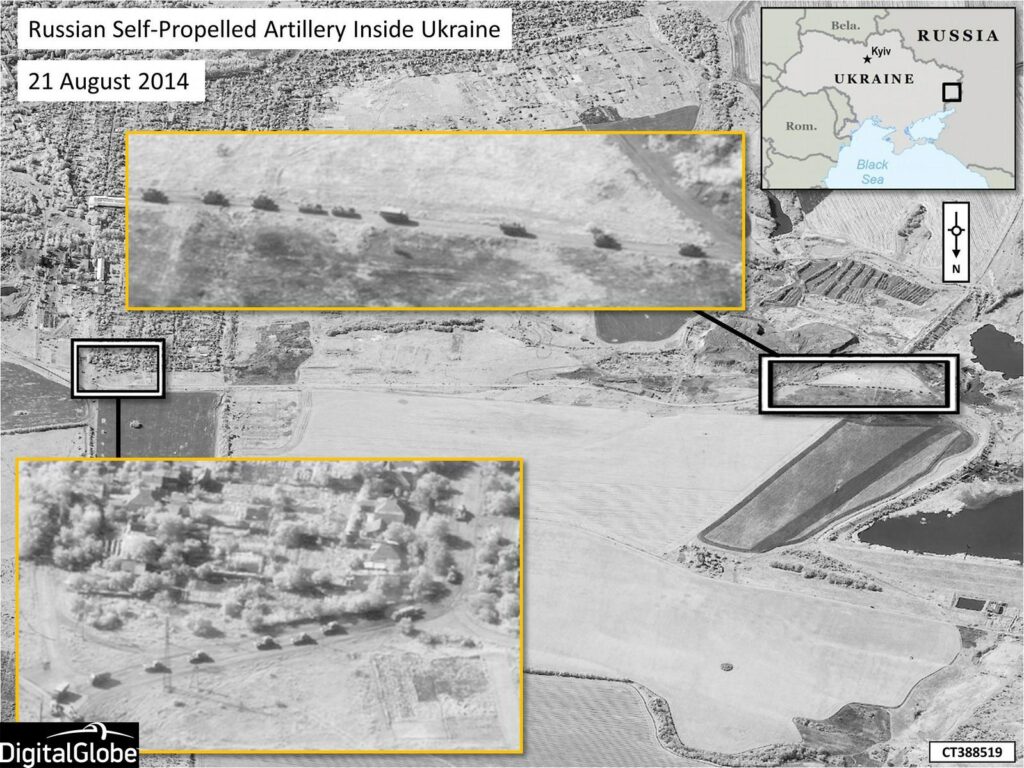
August 2014
On August the 25th 2014, a large column of Russian equipment crossed the Russian-Ukrainian border from Novoazovsk: tanks, Grad rocket launchers, howitzers. At the same time, “Azov” withdrew from Ilovaisk to strengthen the defense of Mariupol. The city began to prepare for defense, checkpoints were set up, and the locals began to dig trenches. Russian forces captured Novoazovsk, and the authority of the so-called “DNR” was proclaimed there. At the same time, separate groups of the armed forces, together with “Azov”, tried to stop the terrorists and push them further away from Mariupol. On September 5th, a battle took place near the village of Shyrokyne, in which the enemy suffered losses of equipment and personnel. On September 6th, Grad rocket launchers were fired from the outskirts of Mariupol towards Ukrainian positions. Meanwhile, the further advance of the terrorist forces was halted.
Note: On September 5th, 2014, an agreement on a temporary ceasefire, the so-called “Minsk ceasefire”, was reached in Minsk. From the moment of the agreement until the start of the full-scale Russian invasion in 2022, Russian terrorists and the armies of their puppet states did not cease fire. In Ukraine, the Minsk Protocol was criticized, especially by nationalists, but this agreement gave the Ukrainian defense forces time and opportunity to prepare for the future “Great War”.
The next round of fighting for Mariupol took place a few months later. Throughout the history of the anti-terrorist operation, there has only been one successful large-scale strategic counter-offensive, led by “Azov”. The operation was preceded by the intense shelling of the “Skhidny” residential area of Mariupol on January 24, 2015, which resulted in the deaths of 29 civilians.
The Pavlopil-Shyrokyne operation enabled the pro-Russian terrorist forces to be pushed back several dozen kilometers from the outskirts of Mariupol, thus securing the city from enemy shelling. From February 10 to 15, 2015, a special unit of the National Guard “Azov” conducted an offensive operation and liberated 5 settlements east of Mariupol from the control of pro-Russian terrorists: Shyrokyne, Berdianske, Lebedynske, Kominternove, Pavlopil. During the advance, the Azov fighters encountered resistance from the terrorists, but they successfully repulsed several counterattacks and held positions that became a long-term outpost for the Ukrainian defense forces.
Battles for Shyrokyne
After the successful offensive operation, “Azov” occupied strategic heights near Shyrokyne and held positions along the coast of the Sea of Azov from March to June 2015, deterring the occupiers. The front line there remained essentially unchanged until February 2022.
Battle for Maryinka
On August 4th 2014, “Azov” fighters, together with other volunteer units, stormed the positions of pro-Russian terrorists in Maryinka, a suburb of Donetsk. Despite having to clear the town of terrorists almost entirely with their bare hands, two BMPs, a tank, a KamAZ ” Pryanik ” and small arms, they successfully completed their combat mission.
The battle for Ilovaisk
After the liberation of Maryinka, there was hope that Donetsk could be liberated quickly. On the orders of the higher military command, from the 10th to the 19th of August 2014, “Azov” carried out combat reconnaissance, identified enemy firing points and destroyed their forces, ammunition and equipment. However, the military command’s calculations were wrong, and instead of an easy target in Ilovaisk, Ukrainian defenders ran into a serious fortified area where they met heavy resistance and suffered losses. It was a miracle that Azov soldiers did not fall into the Ilovaisk cauldron, as they were redeployed to the Mariupol direction when columns of Russian equipment moved from the border to Novoazovsk, and the city itself was virtually defenseless.
Battles on the Svitlodarsk Bulge
For eight months in 2019, “Azov” held a front line on the Svitlodarsk Bulge near the occupied city of Horlivka. At that time, Ukrainian positions advanced for one of the first times since 2015. “Azov” fighters showed creativity by digging trenches right up to the occupiers’ positions to stop enemy shelling.
“Azov” fighters were also involved in carrying out specific special operations along the entire front line. Together with the Security Service, they conducted arrests of pro-Russian terrorists and traitors within the ranks of Ukrainian defense forces. The command particularly valued Azov snipers, aerial reconnaissance, and artillery specialists recognized as the best in the Joint Forces Operation (JFO), involving them in various special operations on the front line. It was reported that the unit also provided security for checkpoints in the Zaporizhzhia region, maintained law and order in Odesa (2016), and reinforced border forces near Transnistria during political tensions (2016).
Chronology of the unit’s reorganization:
- May 5, 2014: “Azov” patrol service of the special-purpose police unit was created.
- September 17, 2014: The “Azov” Battalion was reorganized, and on its basis, the “Azov” Regiment was created.
- November 11, 2014: The “Azov” Regiment became part of the National Guard of Ukraine (within the Ministry of Internal Affairs), which allowed not only numerical expansion, but also the creation of artillery, tank, and other units.
- February 9, 2023: The Separate Special Forces Unit “Azov” was expanded into a brigade — the 12th Special Forces Brigade “Azov” of the National Guard of Ukraine.
Since the beginning of the Russian-Ukrainian war, about five thousand individuals have passed through “Azov.” The battalion started with 150 fighters who participated in the operation to liberate Mariupol. By October 2014, there were already 800 fighters, and on the eve of the full-scale invasion in February 2022, the number had reached approximately 1300.
Next was the defense of Mariupol in the spring of 2022.
“There is no forgiveness or justification for those who are plotting aggressive plans again.”
— Vladimir Putin, excerpt from a speech on Red Square in Moscow during the Victory Day parade (May 9, 2021)
